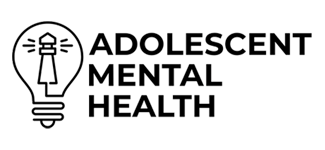Cyclothymia in Teens: Understanding and Managing Mood Swings
Understanding Cyclothymia
Cyclothymia is a chronic mood disorder in youth that causes alternating periods of hypomanic symptoms and mild depressive symptoms. These mood episodes are less intense than those seen in bipolar disorder, but they still affect daily life. People with cyclothymia may experience frequent mood shifts without having a full-blown episode of mania or major depression.
Cyclothymia vs. Bipolar Disorder
Cyclothymic disorder is considered a subthreshold form of bipolar spectrum disorders. Unlike bipolar I disorder, which includes severe manic episodes, and bipolar II, which includes depressive episodes and hypomania, cyclothymia features a milder form of mood instability. While mood stabilizer medications are sometimes used, the treatment plan often focuses on long-term monitoring and psychotherapy.

Common Symptoms in Teens
- Periods of elevated mood or irritable mood
- Hypomanic episode followed by a depressed mood
- Changes in sleep patterns and activity level
- Distractibility and poor impulse control
- Mood instability disrupting daily routines
- Mild depression and emotional sensitivity
Symptoms of cyclothymia often overlap with other childhood disorders, making early diagnosis difficult. Teens may also experience sleep disturbances, changes in appetite, and periods of elated mood.
Causes and Risk Factors
Genetic Influences
A family history of mood disorders or affective disorders increases the risk of developing cyclothymic temperament. Family studies and longitudinal studies have shown that adolescent offspring of individuals with bipolar depression are more likely to show early signs of cyclothymic depression.
Temperamental Traits
Cyclothymic disorder in children often appears alongside affective temperaments like depressive temperaments or irritability. These traits may indicate a higher risk of developing other mental health disorders such as anxiety disorders or disruptive behavior disorders.
Family History and Environment
A history of mental illness or parental risk factors may contribute to the onset of symptoms. Disruptive family environments, stress, and early trauma are common in youth with cyclothymia.
Diagnosis of Cyclothymia
Diagnostic Criteria
According to the American Psychiatric Association, the criteria for cyclothymia include at least one year of alternating hypomanic and depressive symptoms that do not meet the criteria for mania or major depressive disorder. Diagnosis of cyclothymia can be difficult due to overlap with personality disorders or depressive disorder.
Assessment Tools and Methods
Mental health providers use clinical interviews, behavioral observations, and tools like the P-GBI sleep subscale to detect sleep-related symptoms. Differential diagnosis is essential to separate cyclothymia from other childhood disorders and co-occurring disorders.
Challenges in Diagnosis
Identifying cyclothymia requires tracking symptoms over time. Because symptoms may appear as moodiness or typical adolescent behavior, many teens go undiagnosed. Epidemiological studies emphasize the need for earlier identification of cyclothymic traits in clinical settings.
Impact of Cyclothymia on Teens

Academic Challenges
Fluctuating mood symptoms can impair concentration, memory, and task completion. Teens with cyclothymia often show declining academic performance, inconsistent attendance, and difficulty with structured environments.
Social and Emotional Effects
Mood instability impacts peer relationships. Symptoms of mania such as inflated self-esteem or grandiose behaviors can isolate teens, while depressive irritability score trends are linked to social withdrawal and lowered quality of life.
Behavioral Issues
Teens may show impulsivity, disruptive behavior, or emotional outbursts. These behavioral challenges often mirror symptoms of non-bipolar spectrum disorders and complicate psychiatric diagnosis.
Treatment Options
Psychotherapy Approaches
Cognitive behavior therapy (CBT) and behavioral therapy help teens build coping skills, regulate emotions, and manage hypomanic and depressive symptoms. Well-being therapy may also be helpful in improving emotional stability and overall mood.
Medication Management
While not always required, mood stabilizer medications may be used in cases with more intense mood fluctuations. Medication can help teens achieve more stable moods and reduce the frequency of mood episodes.
Lifestyle Modifications
Encouraging physical activity, regulating sleep patterns, and maintaining daily routines are essential lifestyle changes. These habits help reduce symptoms and support mood regulation over time.
Role of Family and Support
Importance of Family Involvement
Family therapy can help address communication issues, reduce conflict, and increase understanding of the disorder. Educating parents about mood disorder spectrum and criteria for inclusion can lead to better outcomes.
Building a Support Network
Support from peers, school counselors, and mental health providers creates a foundation for healthy development. Teens benefit from having consistent support during mood shifts.
Educating Families and Peers
Raising awareness about symptoms of hypomania and depressed mood helps reduce stigma. Training school staff and caregivers to recognize early signs of cyclothymia is key to early intervention.
Early Intervention and Management

Identifying Early Signs
Early symptoms may include irritability, mood swings, and altered sleep or activity levels. Early recognition and treatment of cyclothymia improve long-term outcomes and reduce the risk of developing full-blown bipolar disorder or other affective disorders.
Strategies for Timely Intervention
Regular mental health checkups, mood tracking, and close communication between parents and providers support timely diagnosis and intervention.
Long-term Management and Monitoring
Because cyclothymia is a chronic nature condition, it requires continuous monitoring. Adjustments in treatment plans may be needed to address changes during different stages of the life cycle.
Differentiating from Normal Adolescent Moodiness
Key Differences to Note
Unlike normal adolescent changes, cyclothymia presents as a pattern of irritability and fluctuating moods that impair functioning. It also involves a distinct variant of mood symptoms that persist over time.
Guidance for Parents and Caregivers
If mood instability persists beyond a few weeks or causes issues in school, social life, or family interactions, a mental health evaluation should be considered.
Working with Healthcare Providers
Mental health providers with experience in mood disorder spectrum and adolescent mental health can help develop personalized treatment strategies.
Prognosis and Outlook
Potential Complications
Untreated cyclothymia may progress into more severe mood disorders like manic-depressive illness or major depression. It may also co-occur with anxiety disorders, borderline personality disorder, or substance use.
Improving Outcomes with Treatment
With early diagnosis, a structured treatment plan, and family involvement, youth with cyclothymia would likely see improved emotional regulation, reduced symptoms, and better overall well-being.
Future Research Directions
Ongoing studies from researchers like Youngstrom, Akiskal, Findling, and Geller focus on refining diagnostic categories, improving identification of cyclothymic traits, and understanding mood symptom onset in pediatric populations. Validation studies and longitudinal data will continue to shape how cyclothymic disorder is treated and classified.
FAQ's
Cyclothymia is a milder form of bipolar disorder. Teens with cyclothymia experience mood swings that include hypomanic symptoms and depressive symptoms, but these do not meet the full criteria for manic episodes or major depression. While both conditions affect mood and behavior, cyclothymia involves less severe yet persistent shifts that still disrupt daily life and functioning. Early identification of cyclothymic patterns can help prevent progression to more severe mood disorders.
Early signs include rapid mood changes, periods of elevated mood or irritable mood, sleep disturbances, and fluctuations in energy or activity level. Teens may seem unusually cheerful or active for several days, followed by periods of low motivation or sadness. These shifts often affect school performance, relationships, and impulse control. Tracking these patterns over time is crucial for accurate diagnosis and early treatment.
Cyclothymia often has a genetic component, especially if there is a family history of mood disorders like bipolar disorder or unipolar depression. Environmental factors such as childhood stress, trauma, or inconsistent routines may also play a role. Temperamental traits like emotional sensitivity or difficulty regulating emotions may increase the risk. It is a mental health condition that often begins during adolescence and can be influenced by both biological and environmental factors.
A combination of psychotherapy, lifestyle changes, and sometimes medication helps manage cyclothymia. Cognitive behavior therapy (CBT) and behavioral therapy are often used to help teens recognize mood patterns and build coping skills. In some cases, a mood stabilizer may be prescribed. Lifestyle modifications such as consistent sleep patterns, regular physical activity, and structured daily routines also support mood stability. Involving the family in treatment improves communication and supports long-term management.









